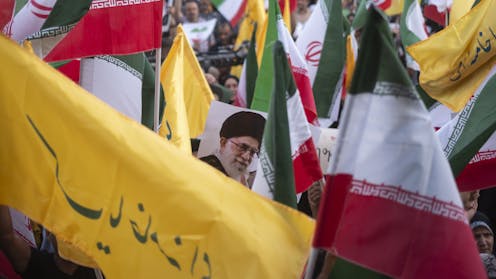Source: The Conversation – Canada – By Gemma Sharp, Researcher in Body Image, Eating and Weight Disorders, Monash University
Following a particular diet or exercising a great deal are common and even encouraged in our health and image-conscious culture. With increased awareness of food allergies and other dietary requirements, it’s also not uncommon for someone to restrict or eliminate certain foods.
But these behaviours may also be the sign of an unhealthy relationship with food. You can have a problematic pattern of eating without being diagnosed with an eating disorder.
So, where’s the line? What is disordered eating, and what is an eating disorder?
What is disordered eating?
Disordered eating describes negative attitudes and behaviours towards food and eating that can lead to a disturbed eating pattern.
It can involve:
-
dieting
-
skipping meals
-
avoiding certain food groups
-
binge eating
-
misusing laxatives and weight-loss medications
-
inducing vomiting (sometimes known as purging)
-
exercising compulsively.
Disordered eating is the term used when these behaviours are not frequent and/or severe enough to meet an eating disorder diagnosis.
Not everyone who engages in these behaviours will develop an eating disorder. But disordered eating – particularly dieting – usually precedes an eating disorder.
What is an eating disorder?
Eating disorders are complex psychiatric illnesses that can negatively affect a person’s body, mind and social life. They’re characterised by persistent disturbances in how someone thinks, feels and behaves around eating and their bodies.
To make a diagnosis, a qualified health professional will use a combination of standardised questionnaires, as well as more general questioning. These will determine how frequent and severe the behaviours are, and how they affect day-to-day functioning.
Examples of clinical diagnoses include anorexia nervosa, bulimia nervosa, binge eating disorder and avoidant/restrictive food intake disorder.
How common are eating disorders and disordered eating?
The answer can vary quite radically depending on the study and how it defines disordered behaviours and attitudes.
An estimated 8.4% of women and 2.2% of men will develop an eating disorder at some point in their lives. This is most common during adolescence.
Disordered eating is also particularly common in young people with 30% of girls and 17% of boys aged 6–18 years reporting engaging in these behaviours.
Although the research is still emerging, it appears disordered eating and eating disorders are even more common in gender diverse people.
Can we prevent eating disorders?
There is some evidence eating disorder prevention programs that target risk factors – such as dieting and concerns about shape and weight – can be effective to some extent in the short term.
The issue is most of these studies last only a few months. So we can’t determine whether the people involved went on to develop an eating disorder in the longer term.
In addition, most studies have involved girls or women in late high school and university. By this age, eating disorders have usually already emerged. So, this research cannot tell us as much about eating disorder prevention and it also neglects the wide range of people at risk of eating disorders.
Is orthorexia an eating disorder?
In defining the line between eating disorders and disordered eating, orthorexia nervosa is a contentious issue.
The name literally means “proper appetite” and involves a pathological obsession with proper nutrition, characterised by a restrictive diet and rigidly avoiding foods believed to be “unhealthy” or “impure”.
These disordered eating behaviours need to be taken seriously as they can lead to malnourishment, loss of relationships, and overall poor quality of life.
However, orthorexia nervosa is not an official eating disorder in any diagnostic manual.
Additionally, with the popularity of special diets (such as keto or paleo), time-restricted eating, and dietary requirements (for example, gluten-free) it can sometimes be hard to decipher when concerns about diet have become disordered, or may even be an eating disorder.
For example, around 6% of people have a food allergy. Emerging evidence suggests they are also more likely to have restrictive types of eating disorders, such as anorexia nervosa and avoidant/restrictive food intake disorder.
However, following a special diet such as veganism, or having a food allergy, does not automatically lead to disordered eating or an eating disorder.
It is important to recognise people’s different motivations for eating or avoiding certain foods. For example, a vegan may restrict certain food groups due to animal rights concerns, rather than disordered eating symptoms.
What to look out for
If you’re concerned about your own relationship with food or that of a loved one, here are some signs to look out for:
-
preoccupation with food and food preparation
-
cutting out food groups or skipping meals entirely
-
obsession with body weight or shape
-
large fluctuations in weight
-
compulsive exercise
-
mood changes and social withdrawal.
It’s always best to seek help early. But it is never too late to seek help.
In Australia, if you are experiencing difficulties in your relationships with food and your body, you can contact the Butterfly Foundation’s national helpline on 1800 33 4673 (or via their online chat).
For parents concerned their child might be developing concerning relationships with food, weight and body image, Feed Your Instinct highlights common warning signs, provides useful information about help seeking and can generate a personalised report to take to a health professional.
![]()
Gemma Sharp receives funding from an NHMRC Investigator Grant. She is a Professor and the Founding Director and Member of the Consortium for Research in Eating Disorders, a registered charity.
– ref. What’s the difference between an eating disorder and disordered eating? – https://theconversation.com/whats-the-difference-between-an-eating-disorder-and-disordered-eating-256787



